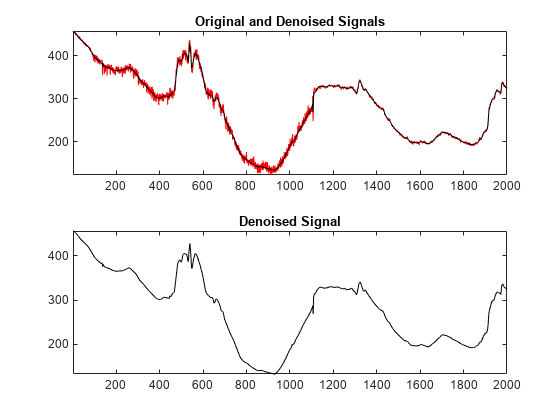

- #WAVELET DENOISING EASYHDR PDF#
- #WAVELET DENOISING EASYHDR INSTALL#
- #WAVELET DENOISING EASYHDR PATCH#
- #WAVELET DENOISING EASYHDR SOFTWARE#
- #WAVELET DENOISING EASYHDR OFFLINE#
Offline image quality with good, highly multithreaded performance.

Create ready to edit image sequences/video files in all kinds of losslessly compressed formats. badpixels file in the repository (the Download link), which you can adapt to remove bad pixels (which all cameras have) from your footage.ĭarkframe Information: Read more about darkframe subtraction here: Ĭonfig File Examples: You can find example config files in the download repository, under configs/*.conf.Īll command line options must go before the list of MLV/RAW files or DNG folders.Ĭonvmlv is essentially a big piece of interface glue between many great image processing tools, whose features it in many cases inherits directly!Ĭode: -Easy usage w/good defaults - specify -m, follow with a list of. *Added documentation that symbolic linking support is required.įull changelog can be found in the repository, under CHANGELOG.īad Pixels File Example: You can find a sample.
#WAVELET DENOISING EASYHDR PATCH#
Requred modding the script a patch is in the main repo, and is distributed alongside binaries. *Fixed mlv2badpixels.sh when mlv_dump wasn't on the PATH. *Fixed the color-ext LUTs, which were unfixed due to laziness. *Fixed bug with split MLV files by piping the FRAMES output through "paste -s -d+ - | bc" V2.0.3: Some more bug fixes, based on a bug report.
#WAVELET DENOISING EASYHDR PDF#
Make sure all binaries, and the script, have execution permissions (run 'chmod +x file'), otherwise convmlv will fail! It will tell you what it's missing & where to get it if you try!ĭocumentation: You can find an up to date tutorial/documentation PDF I made under 'docs/docs.pdf' in the repository. Refer to the help page (under MANPAGE, or run './convmlv.sh -h') for links to these. GitHub Mirror: <- A simple mirror to GitHub.ĭependencies on other ML tools are bundled in the release.
#WAVELET DENOISING EASYHDR INSTALL#
#WAVELET DENOISING EASYHDR SOFTWARE#
sig file and verify the tarball integrity (so you know that nobody has modified the software from me to you)
#WAVELET DENOISING EASYHDR OFFLINE#
This is, simply enough, an offline image processing tool converting ML formats (RAW, MLV, DNG sequences) to many usable formats (EXR, DPX, and Prores). I have screenshots of a current project, if you wish. For color work/the render, I can reenable the tiff sequence seamlessly. What I do is import both the tiff and the jpg into a "metaclip" (essentially it locks their timing relative to each other), then disable the slow tiff, using the proxy jpgs for fast editing. The reason I need this script to give me TIFFs/JPGs is that image sequences (as opposed to videos, even ProRes, of any kind) are very optimized. Workflow takes some fiddling, but the power is all there (the node-based compositor is extremely capable, to the point where you can implement many algorithms mathematically in it), for example it's perfect for when I want to take the take a simple RGB difference of two images and examine the result. Besides the obvious 3D aspects, I make frequent use of its compositor (which I've made node groups for many tasks) and video editor (which is surprisingly good) for creative film making. Total running time of the script: ( 0 minutes 0.Absolutely! To be honest, I use Blender for everything. print ( f 'Estimated Gaussian noise standard deviation = /4$) \n ' 'PSNR= %0.4g ' % psnr_visushrink4 ) fig. sigma_est = estimate_sigma ( noisy, channel_axis =- 1, average_sigmas = True ) # Due to clipping in random_noise, the estimate will be a bit smaller than the # specified sigma. gray () # Estimate the average noise standard deviation across color channels. subplots ( nrows = 2, ncols = 3, figsize = ( 8, 5 ), sharex = True, sharey = True ) plt. chelsea ()) sigma = 0.12 noisy = random_noise ( original, var = sigma ** 2 ) fig, ax = plt. Import matplotlib.pyplot as plt from skimage.restoration import ( denoise_wavelet, estimate_sigma ) from skimage import data, img_as_float from skimage.util import random_noise from trics import peak_signal_noise_ratio original = img_as_float ( data.


 0 kommentar(er)
0 kommentar(er)
